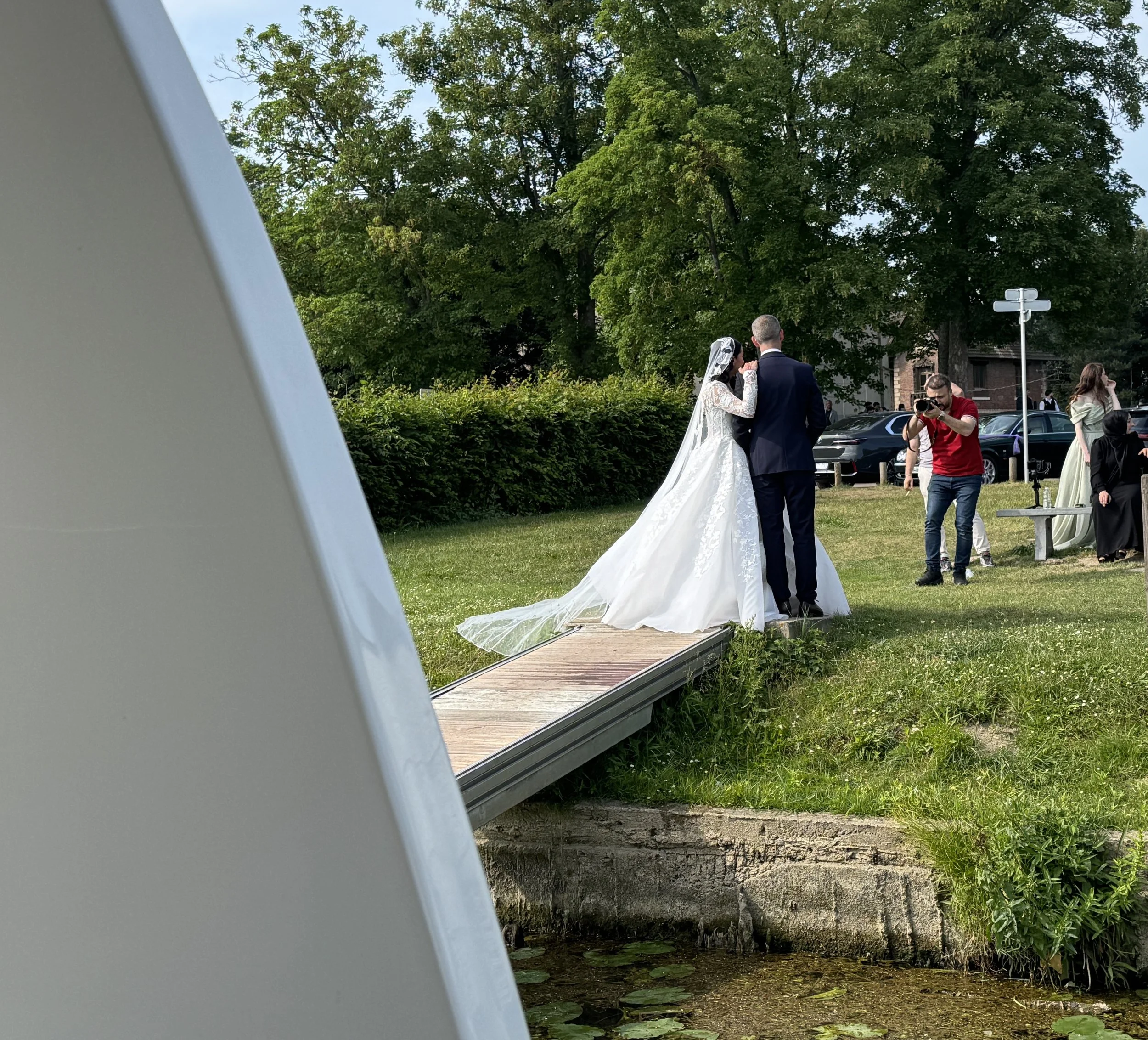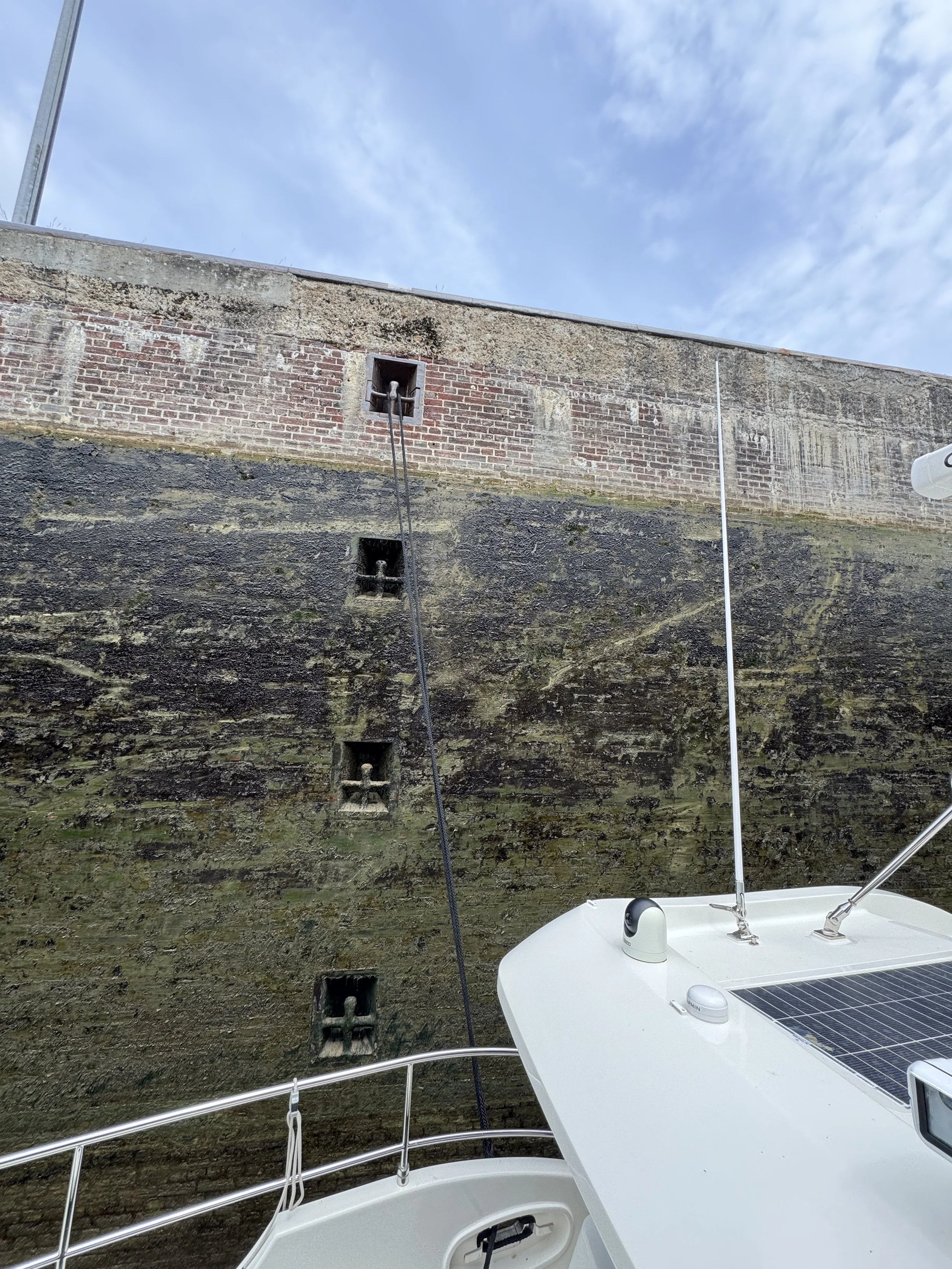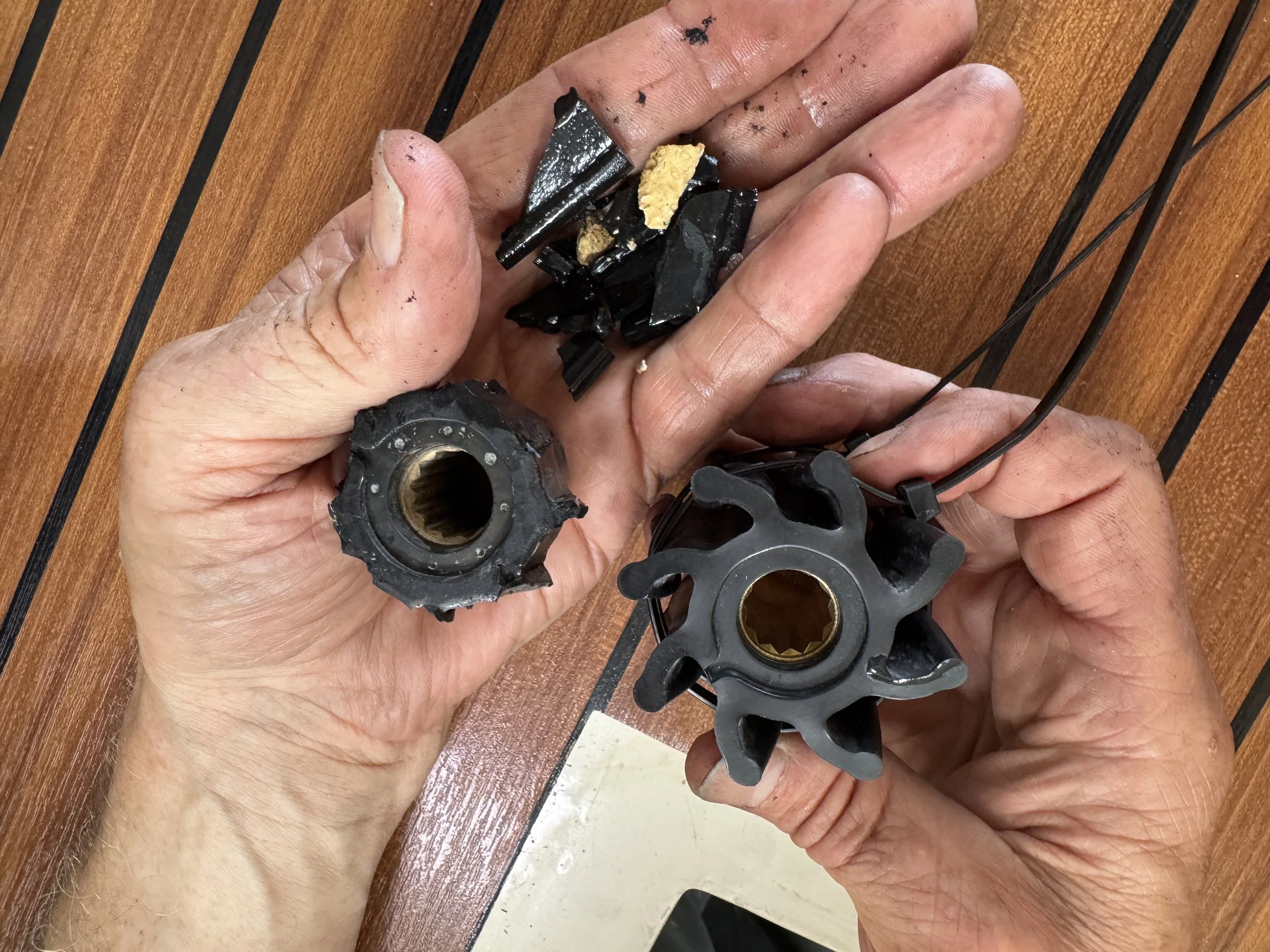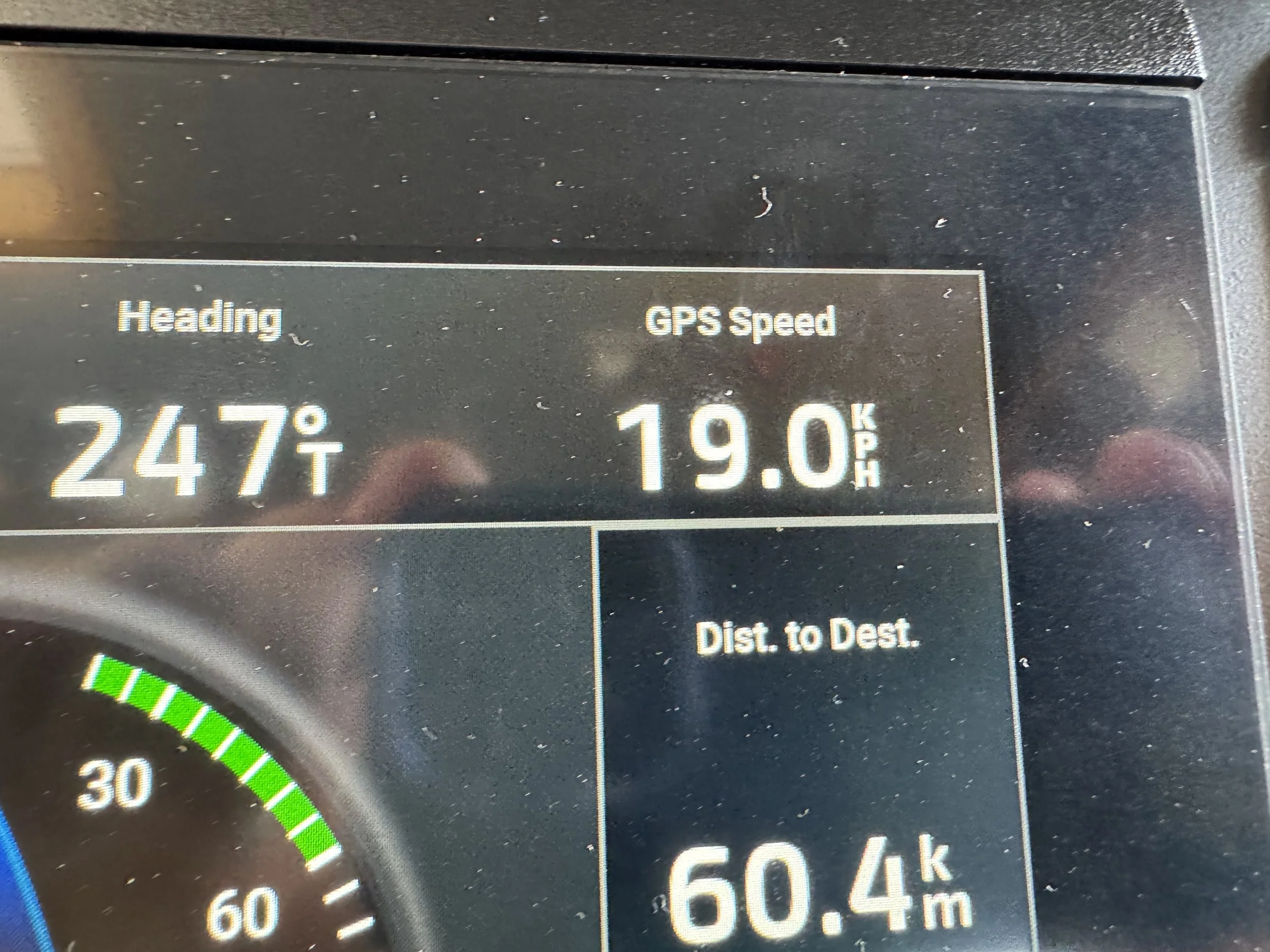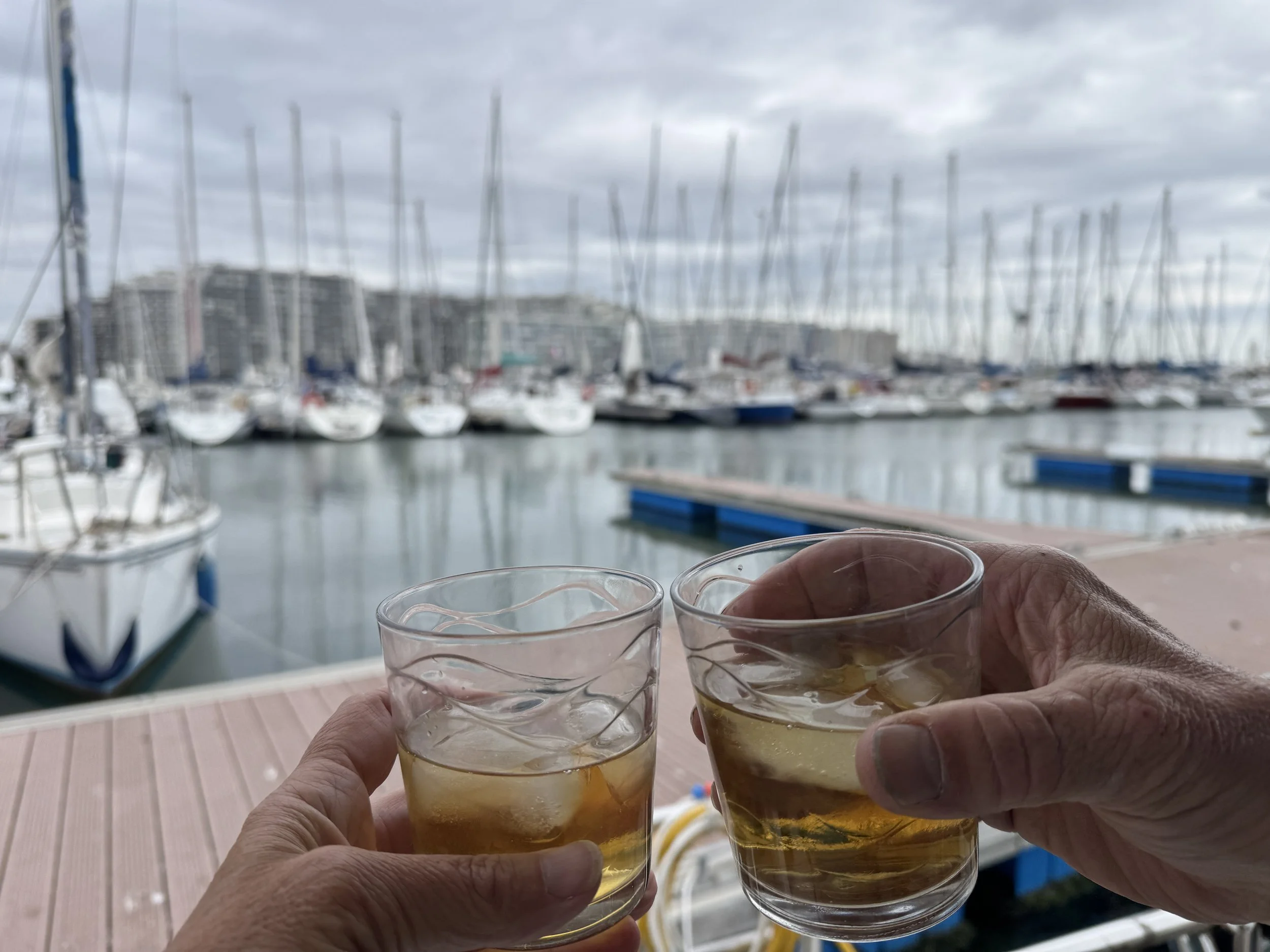Entering La Manche
Our new battery-bank fuses arrived in the mail in Andrésy and once installed, Meraki seemed to be functioning normally. However, we needed to ensure the bow thruster, which we thought was the source of the problem, was working properly as well. Given the rivers are so full of weeds, vegetation, sticks, logs, etc. we thought it was likely something had gotten stuck inside. We sent the GoPro down to check it out but it was too hard to get a good look so Tom jumped in and inspected it himself, finding nothing stuck in either side.
We were quite confident the three fuses had tripped sequentially. While traveling here from Paris, the tachometers had dropped to zero a couple times and then coming back online and the VHF radio had shut off a few times as well - something that happens when there is low voltage. We learned that Meraki needs all three battery banks connected to run the bow thruster and once we lost one fuse the others were unable to carry the load.
Despite not knowing what caused the failure in the first place (I’d certainly love to know) we set out early the next morning, warming up the engines and before slipping the lines, gently testing the bow thruster. Everything seemed fine so despite feeling a bit uneasy, we set off. It turned into a beautiful, warm, sunny day and the gentle flow of the river settled my nerves. We passed between the ruins of the 11th century Limay Bridge, partially destroyed in 1940 by the French in an attempt to slow the progress of the Germans. We passed surprisingly serene landscapes, gorgeous homes in every style imaginable, and transited through a couple more locks, and after a long 8 hour day, without any incident, we arrived in Vernon.
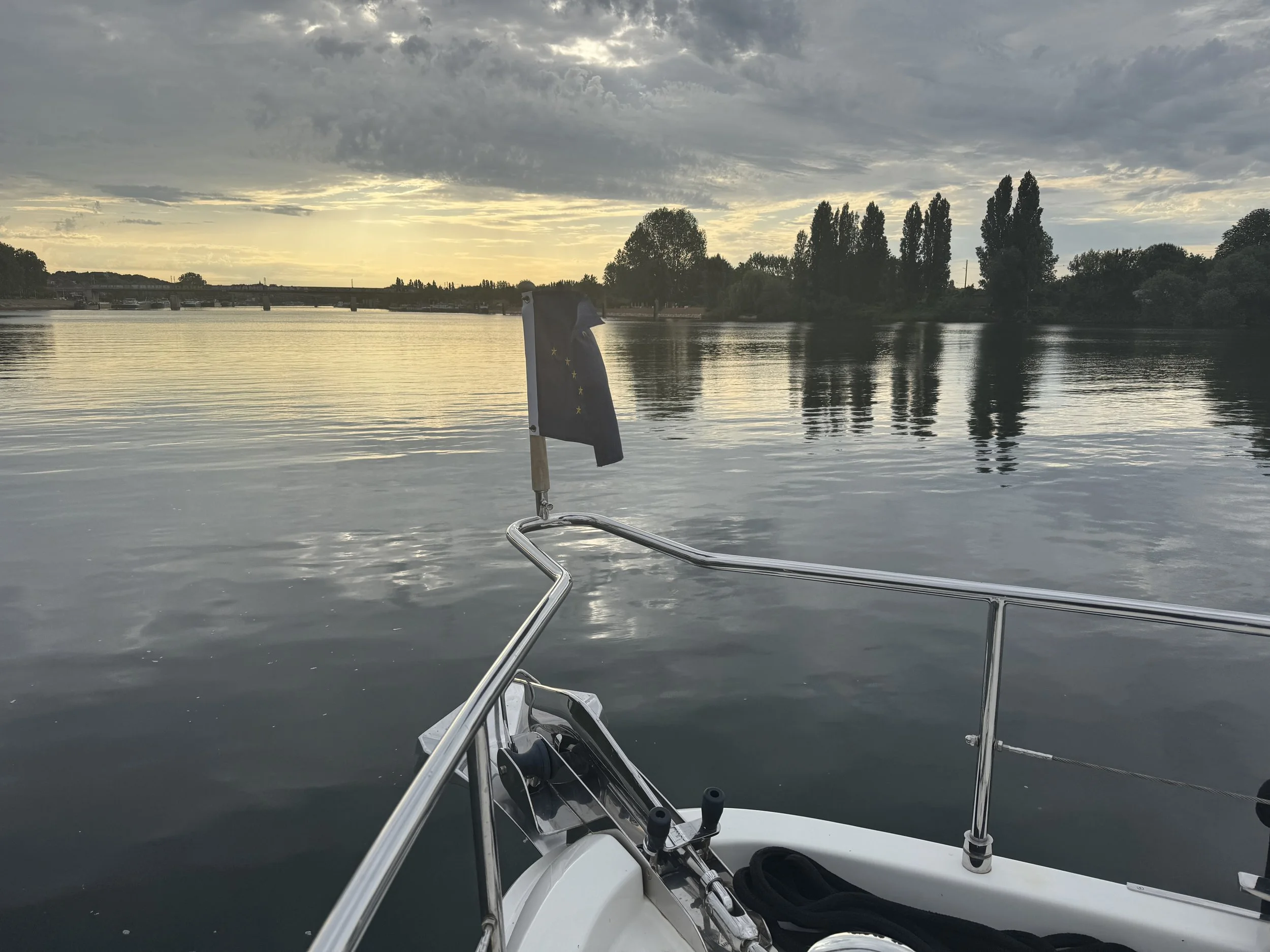





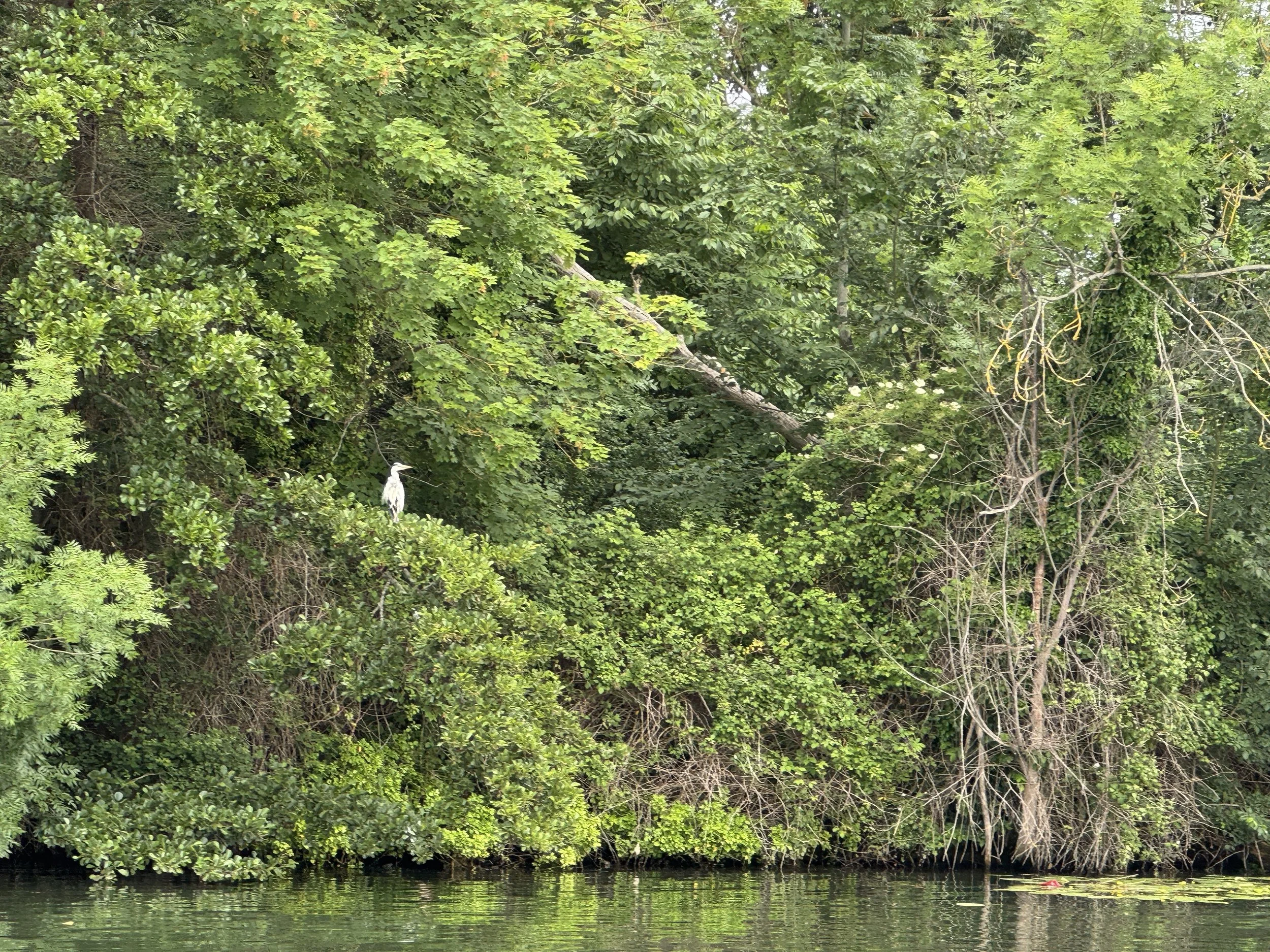


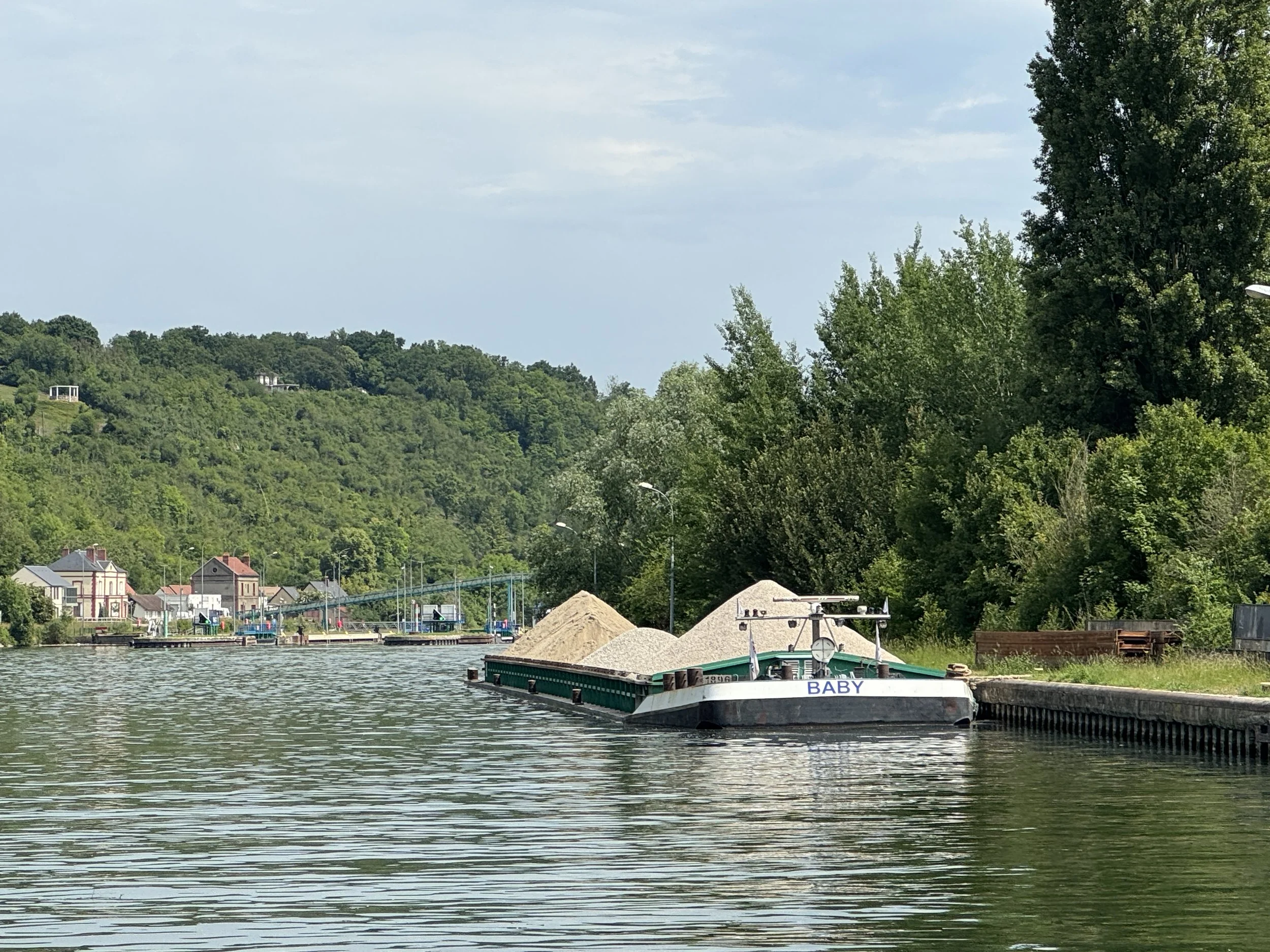



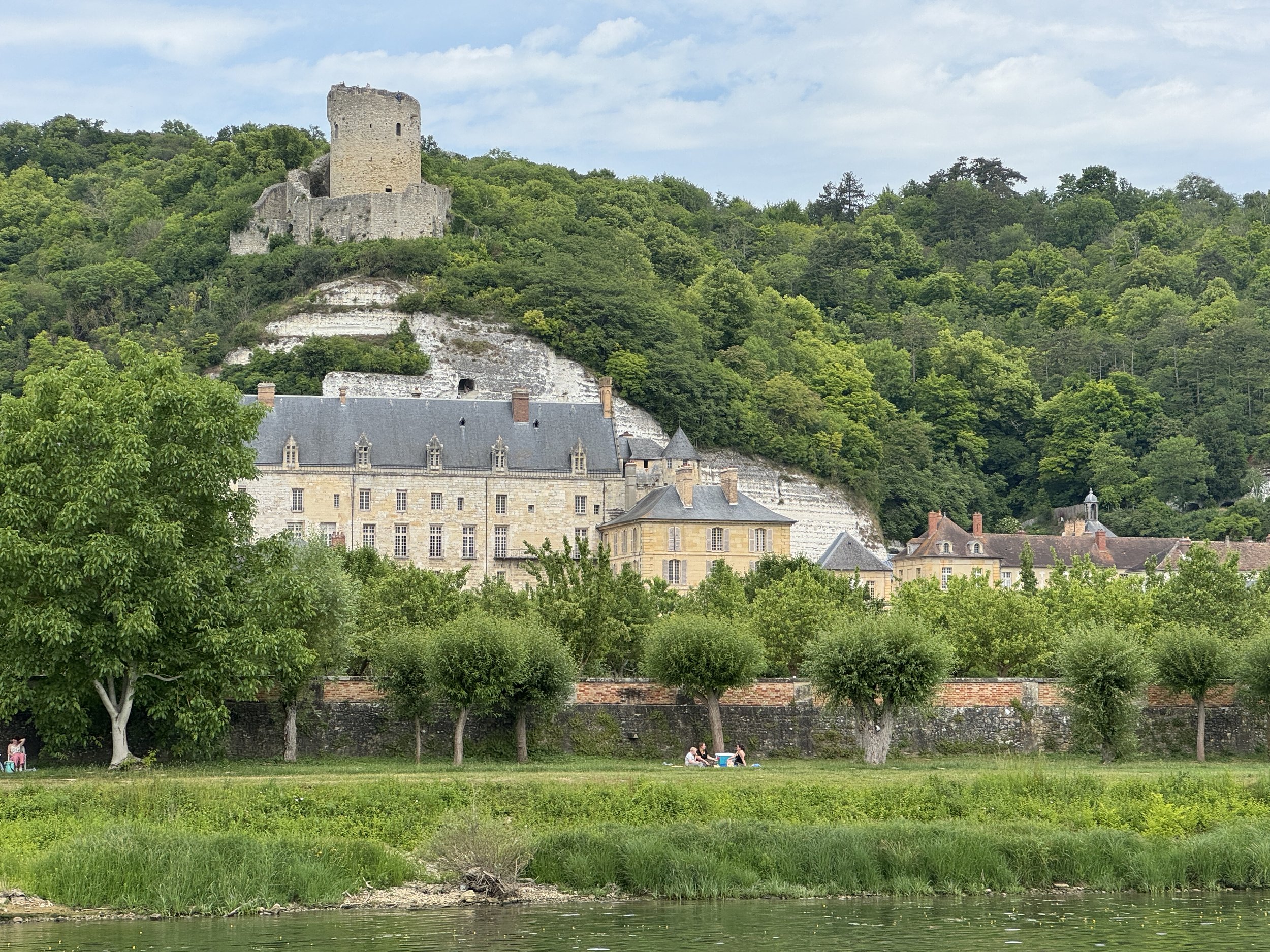









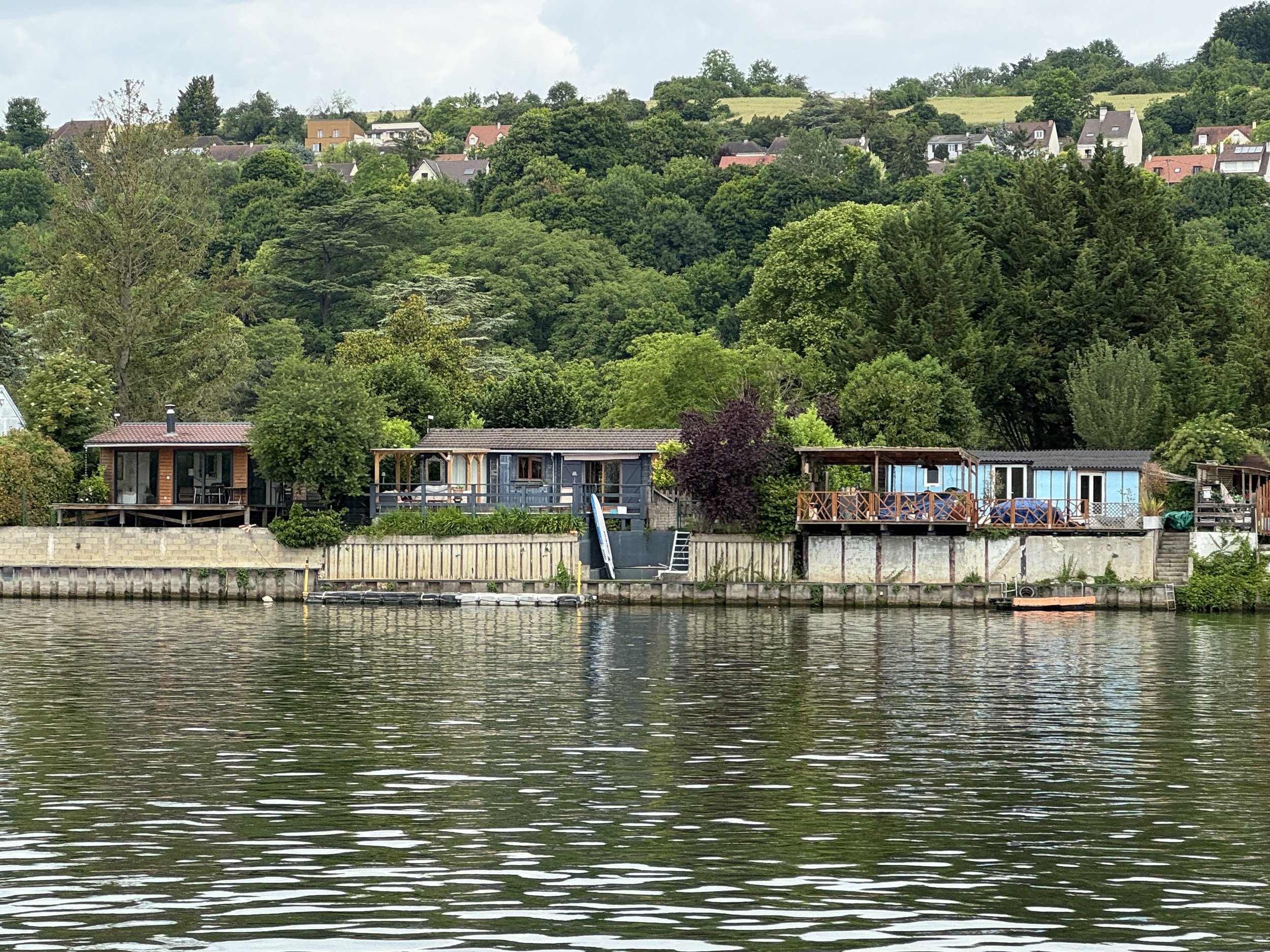



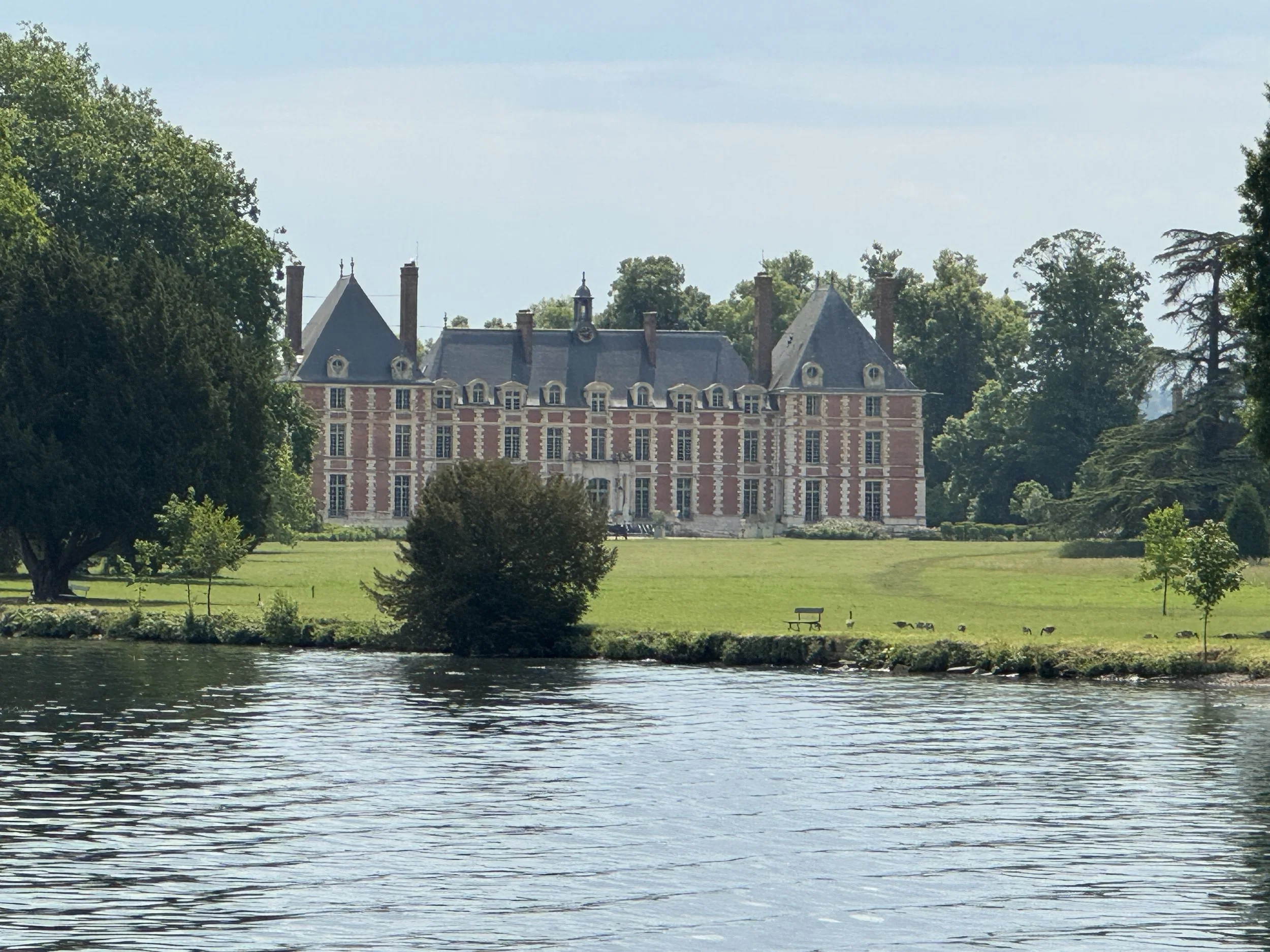




We tried to stayed out of sight during their photo shoot.
It was an odd yet interesting evening at the Vernon pontoon - we were approached by lots of visitors; some wanting information about the river, others requesting a ride on our boat (?), and one asked if we would mind being the backdrop for their wedding photos - curious request, but fine by us.
We were now in the Normandy region of northern France with just a few more days before we’d complete our inland passage. Just 80 feet (24 meters) above sea level, and yet still more than 125 miles (200 kilometers) from the English Channel.
The riverscape of the Basse Seine or Lower Seine is very different. There are hundreds of small islands here, often forested, and though many are inhabited, very few have actual towns on them. Pleasure boats are not permitted to tie up on these small islets though there are side channels around them and many have pontoons for visitors along the mainland. There are also numerous tributaries feeding into the lower Seine, the main ones being the Aube, Yonne, Oise, and Marne Rivers.
I awoke the next morning and received a text from our former barge neighbor back in Paris. Lily, the mallard momma, had successfully hatched six of her eleven eggs! I was so delighted to hear this and was amazed they had survived not only without Lily sitting on them consistently, but also the long motorcycle ride back to Paris. Mathieu’s determination and perseverance in helping her recover her offspring was such a sweet reminder that we all have the potential to care for others and opportunities to allow ourselves to be vulnerable. In doing so we cultivate feelings of hope and optimism while spreading kindness and joy. My heart is full.
I felt light-hearted and optimistic as we set out for a 9-hour transit to Rouen. We floated through a large farming region with extremely fertile soil used for growing wheat and corn, as well as vineyards. We locked down two more times, reaching the tidal limit of the Seine at the Amfreville Lock. Having arrived there at low tide meant a drop of 7-8 meters (~23+ feet) and for our very last lock on our transit across France it was quite a slimy one! When you’ve seen one lock, you’ve seen…one lock!
Due to the less than appealing bollards, I decided to forego lowering the line as we descended. YUCK!
Rouen has been an active port since the Roman occupation. It was devastated by the Vikings in 841, and by the Middle Ages had recovered its former glory as a major shipping port of grain and textiles to the entire world. In the 19th century, to accommodate the deeper draft of the new steam ships, the river was dredged which eliminated all of the nearly 30 islands which once appeared on the old navigation charts.

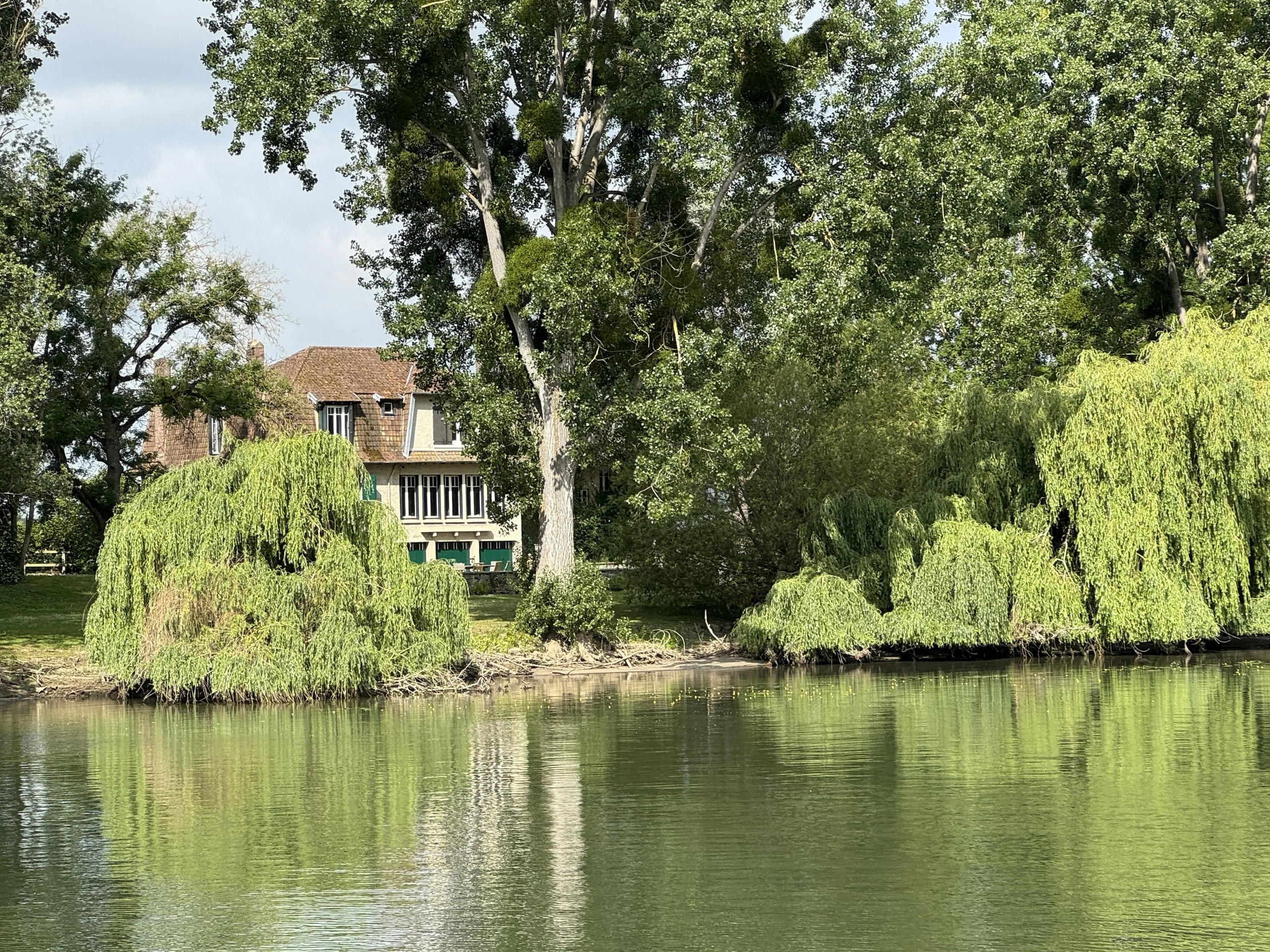





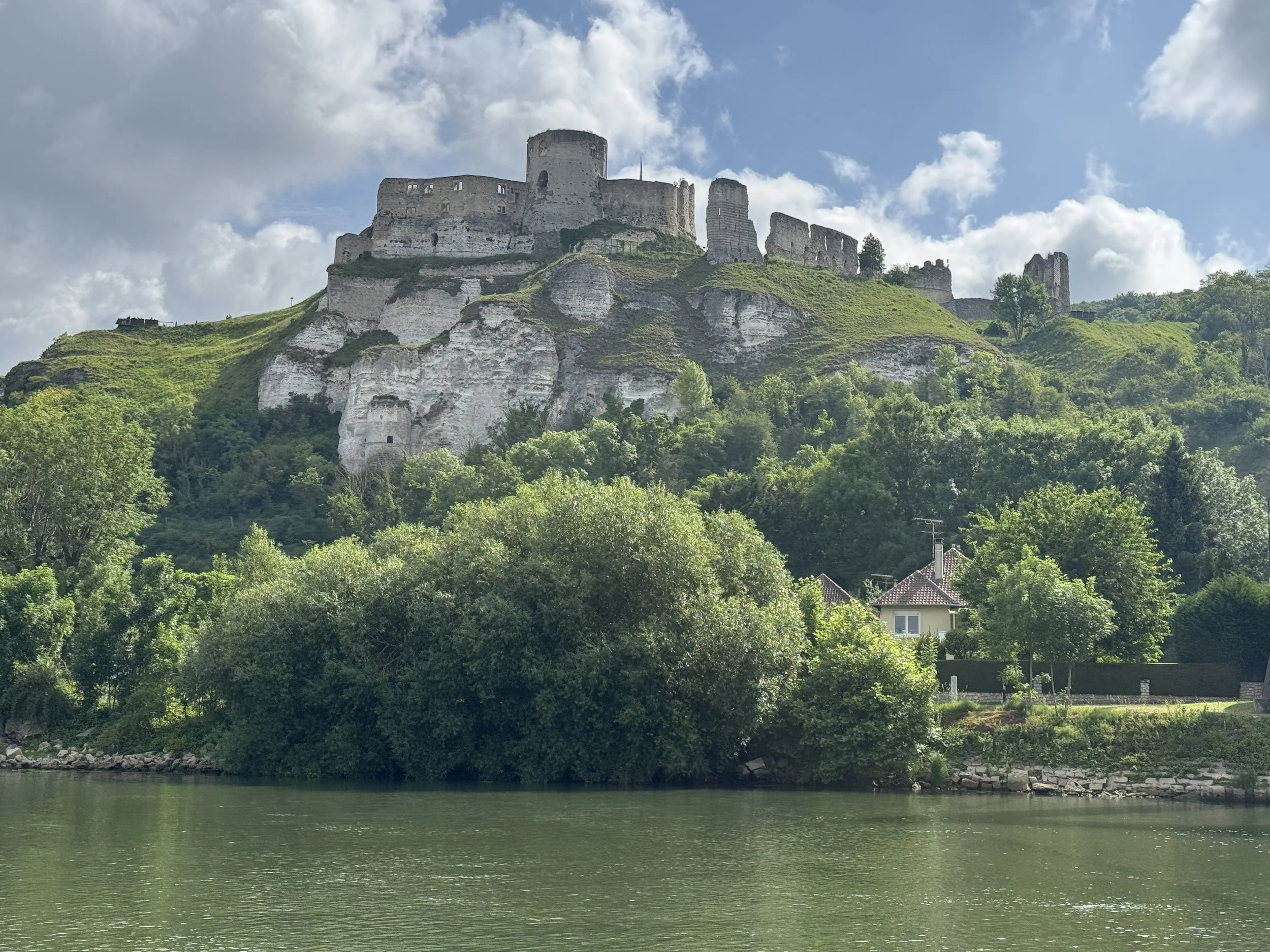




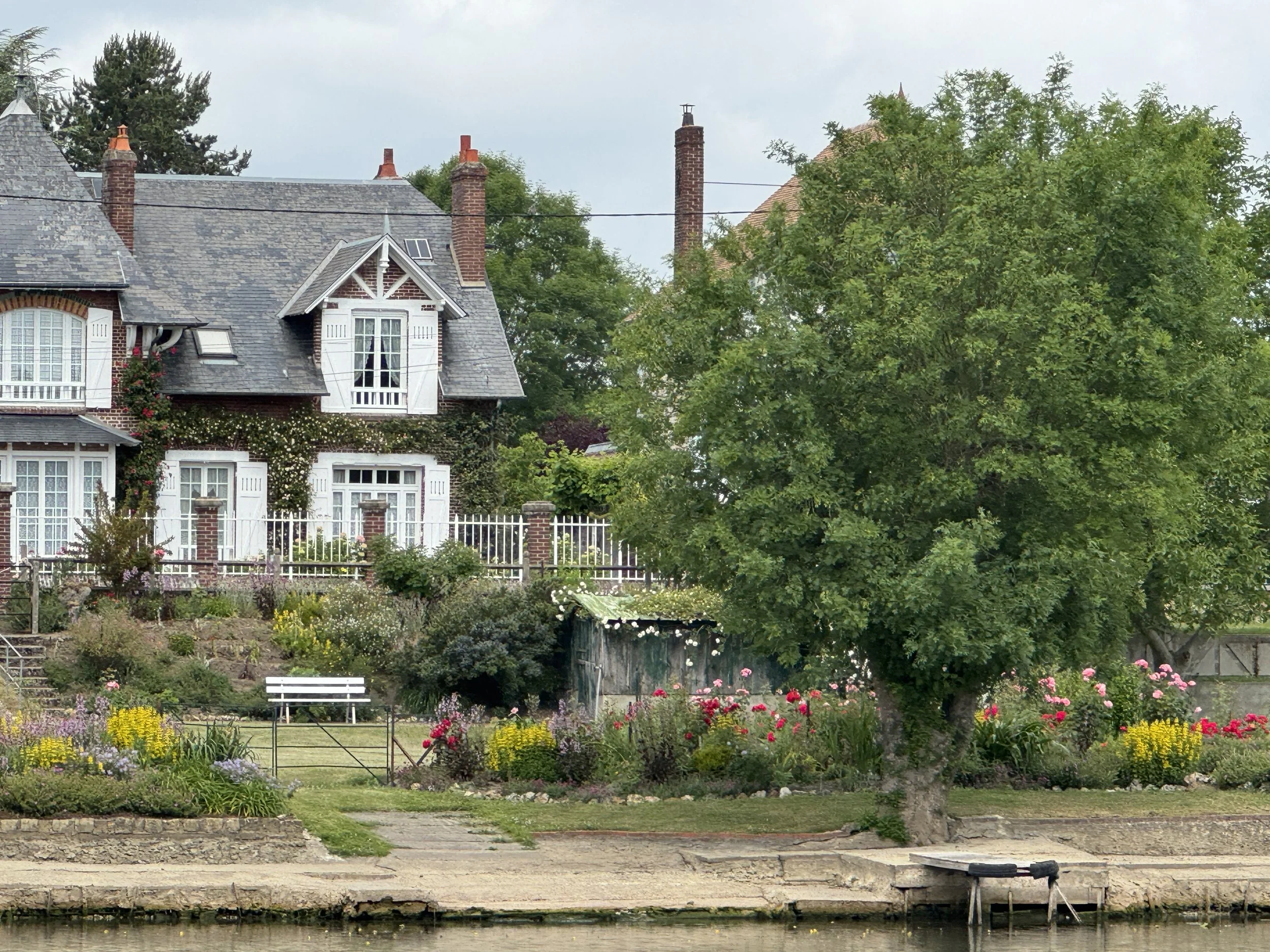








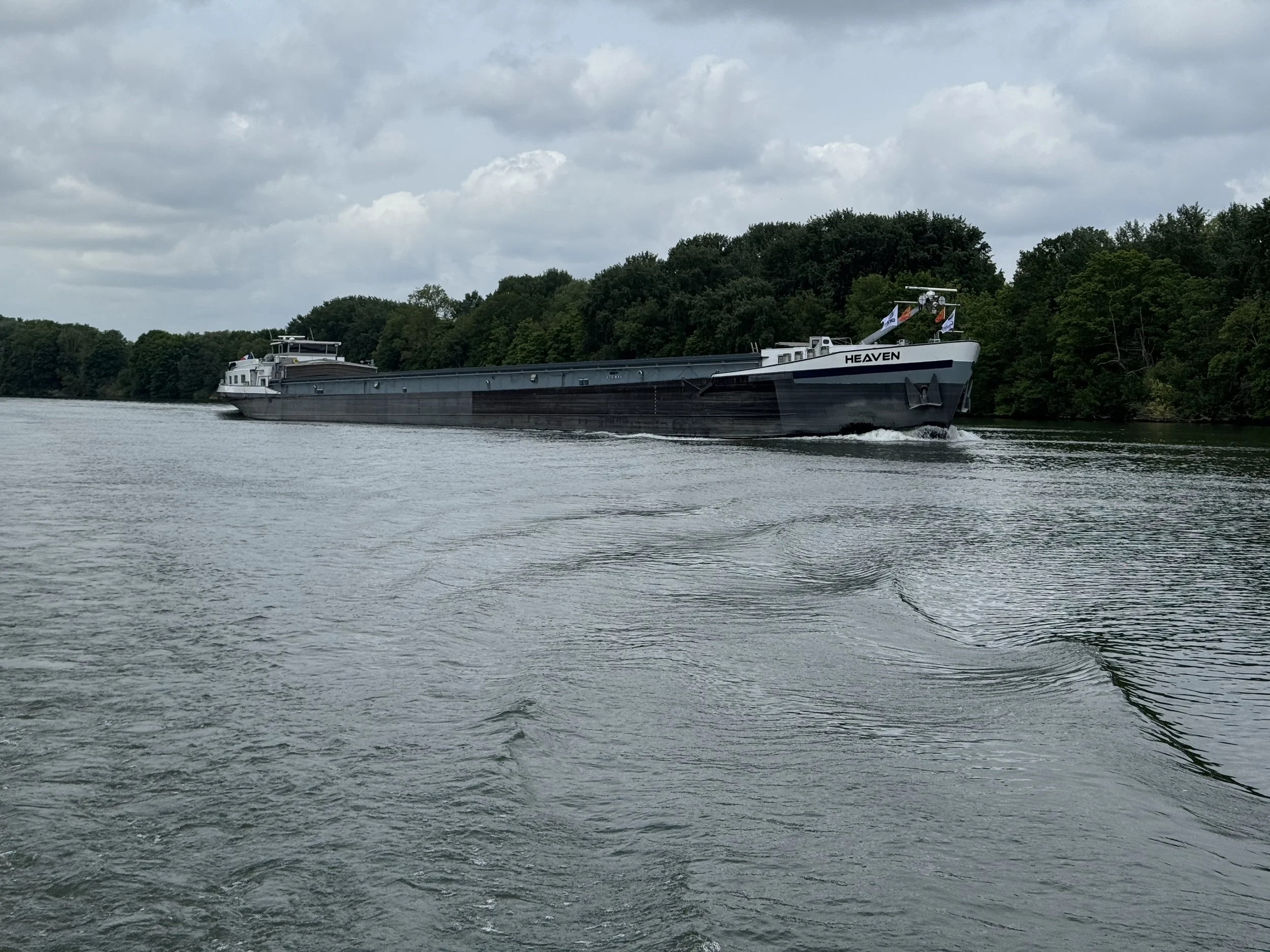
We spent the night in the marina adjacent to the Port of Rouen. It’s a relatively small marina, offering 100 moorings for boats ranging from 5 to 17 meters. At 12.6 meters for once Meraki fit right in!
The one on the left once looked like the one on the right.
The plan was to leave early the next morning for Le Havre, a large seaport at the mouth of the river. We were in brackish water now and like a horse racing for the barn, we were chomping at the bit to get to the ocean. It would take us 10 hours to cruise to the seaport and we were raring to go. Or so we thought. We departed at first light, 5:30am, and motored just a short way towards the marina entrance before an exhaust alarm sounded. Tom knew immediately what had happened, despite having cleaned our strainers probably 40-50 times, he’d forgotten to open the raw water-cooling valve on the port engine. Even a few minutes without water flowing through the impeller will cause it to shred and need to be replaced. We turned around and tied up again in the same slip - we would be spending another day here.
We ended the day having both completed a bunch of chores, and tried once again to leave the following morning - this time actually exiting the harbor! It was overcast as we moved into the tidal estuary. We knew it was not possible to reach Le Havre on one tide cycle, but we planned our departure with the outgoing tide hoping to have fewer hours on the river after it turned around and began flooding back in. The current isn’t swift on the Seine but running with the tide meant we were moving over 10 knots! (19kph).
There are only three bridges across the broad river below Rouen, but it’s easy enough to cross the Seine in every little town and village along the way. Ferries run back and forth every few minutes, stopping barely long enough to unload and reload cars and passengers. There are so many of them! As we dodged one we could already see the next one just ahead. I imagine one ferry making 30-40 crossings every day!


















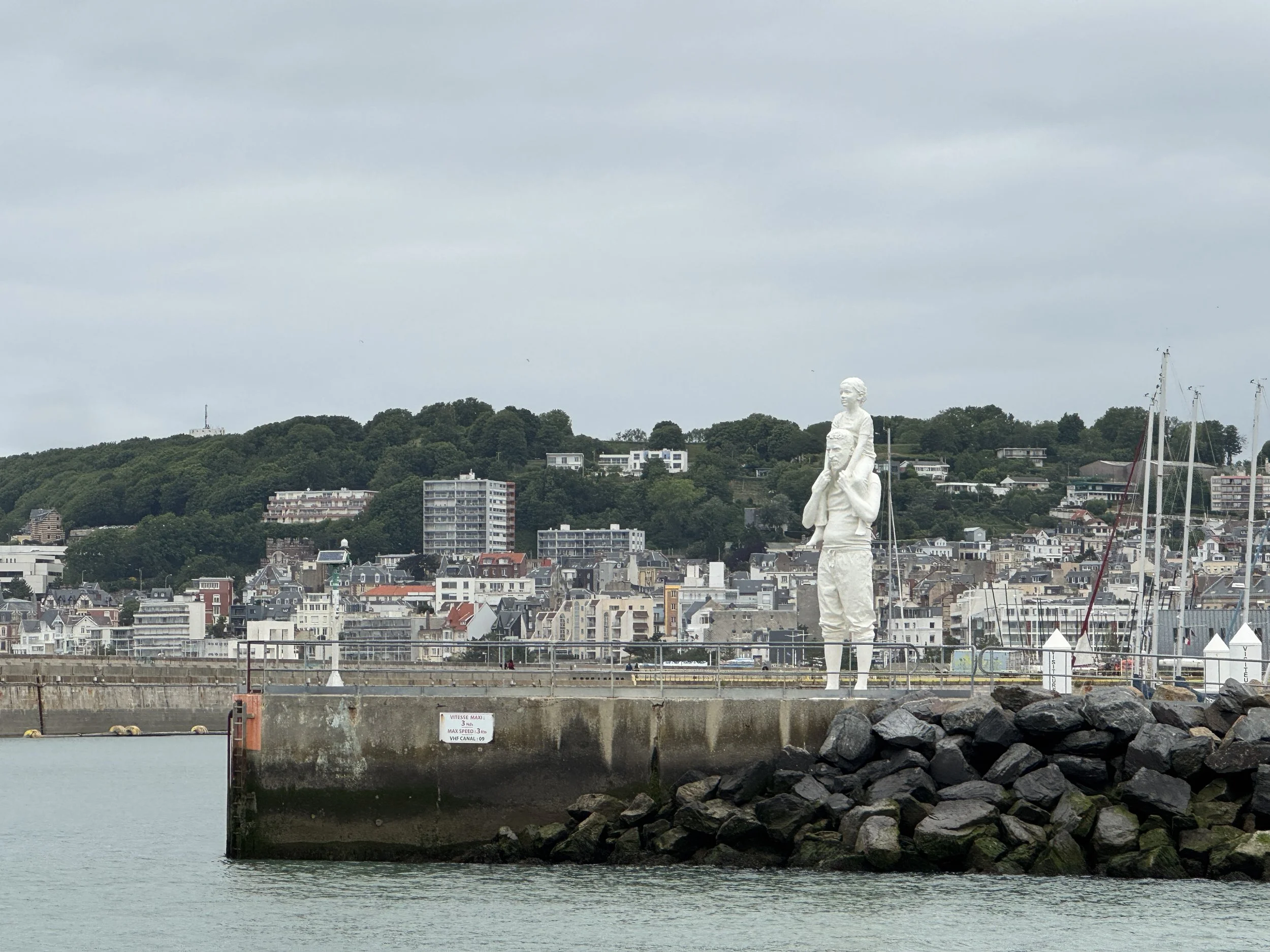
We arrived in the giant port of Le Havre feeling quite satisfied. We were now officially in "La Manche," the French term for the English Channel which translates to "The Sleeve." We had entered the French waterways system at La Grou de Roi on the Mediterranean on March 3rd and exited the Seine on June 3rd - exactly 93 days later. We had spent 42 of those days underway and traveled 761 nautical miles, transited 184 locks, put 205.3 hours on the engines and used 440 gallons of fuel (which includes generator hours and heater use). We succeeded in getting through the continent without any scratches to our gel coat or stainless. We drove through areas choked with weeds, ran aground too often to count, cleaned the strainers every travel day, and washed "France" off of Meraki dozens of times. Just the same, it was an incredible trip.
We were now in a large marina, surrounded by oceangoing boats and smelling the salt air. One day of work and we too will be seafaring once again. So excited to explore the North Sea. Onward.
Note: photo captions will not appear if viewing on a cell phone.






